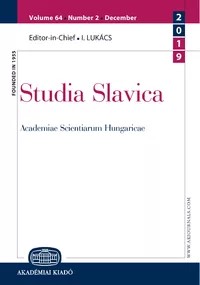Параметри інтертекстуального простору української літератури 1920-х років: проблема жіночої (не)видимості
Parameters of the Intertextual Space of Ukrainian Literature in the 1920s: The Problem of Female (In)Visibility
Author(s): LYUDMYLA SKORYNASubject(s): Ukrainian Literature
Published by: Akadémiai Kiadó
Keywords: Ukrainian literature in the 1920s; intertextual space; women writers; canon; intertexteme; epigraph; quotation; allusion; hyperintertextuality; “lack of authority”;
Summary/Abstract: The paper analyzes the problem of women’s presence in the intertextual space of Ukrainian literature in the 1920s. As the object of the study, we take the works of writers who participated in the literary life of Soviet Ukraine. In the first part of the study, the peculiarities of the intertextual representation of the works of women writers in the male writer’s works are highlighted. In the second part, it is clarified how women writers appeal to the works of representatives of their gender. In the “male” segment of the intertextual space of the 1920s, various types of intertextemes borrowed from the works of 218 writers were marked: here we have only 8 women to mention: Lesia Ukrainka, Marko Vovchok, Maria Zahirnia, Sappho, Harriet Beecher Stowe, George Sand, Mihri Hatun, and Anna Akhmatova. It was found that male authors appeal to the works of women writers in the following situations: 1) when it comes to life spheres recognized as purely feminine, in particular, love (George Sand, Sappho, and Mihri Hatun); 2) if the works of women writers have gained significant resonance and are associated in the reader’s mind with an important social problem (Harriet Elizabeth Beecher Stowe); 3) when the work of a female writer is included in the literary canon (Marko Vovchok and Lesia Ukrainka); 4) under the influence of literary fashion (Anna Akhmatova); 5) the choice of intertextemes is also influenced by the writers’ personal reading preferences (Maria Zahirnia). The most common types of intertextual interaction are allusions and reminiscences related to the literary reputation of a certain author, specifics of her creative work reception. There were also two epigraphs noted (from the works of Lesia Ukrainka and Mihri Hatun) and two examples of hyperintertextuality (artistic transformation of the works of Lesia Ukrainka and Sappho).
Journal: Studia Slavica Academiae Scientiarum Hungaricae
- Issue Year: 67/2022
- Issue No: 1-2
- Page Range: 199-211
- Page Count: 13
- Language: Ukrainian
- Content File-PDF

